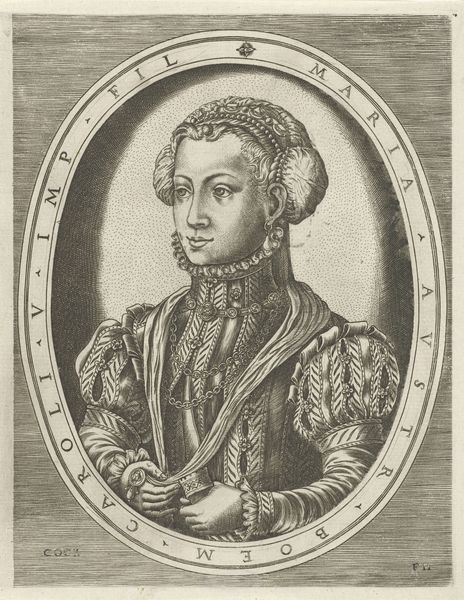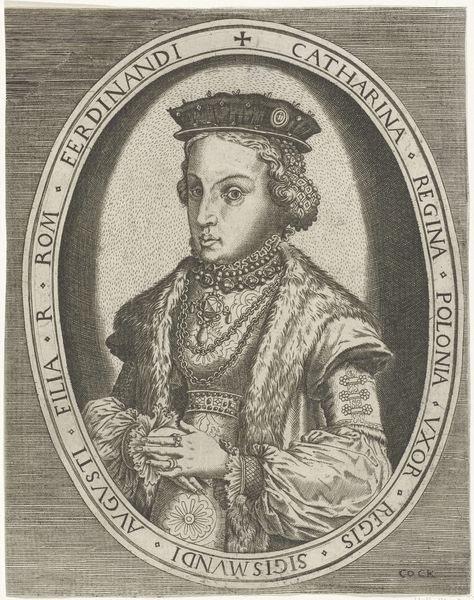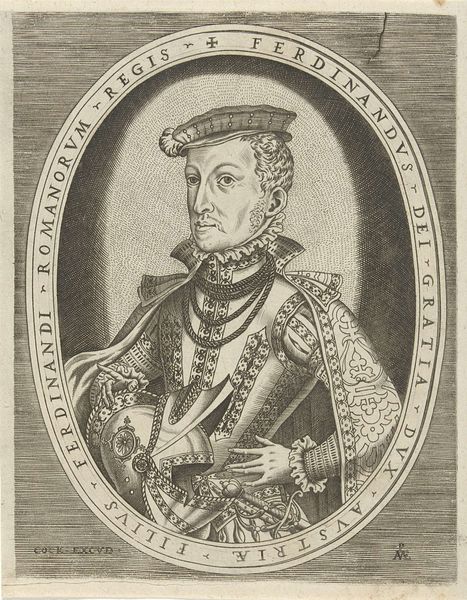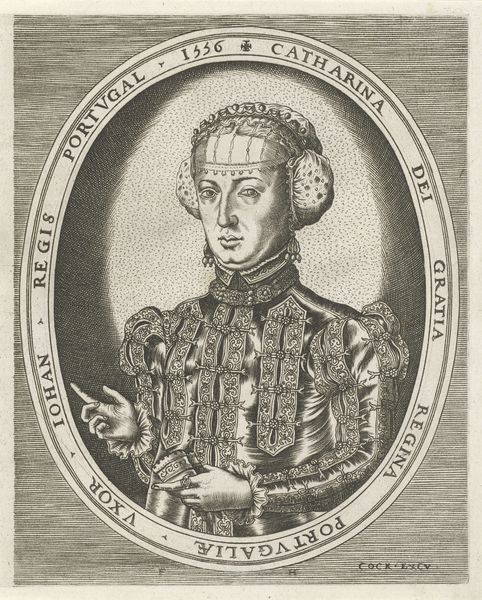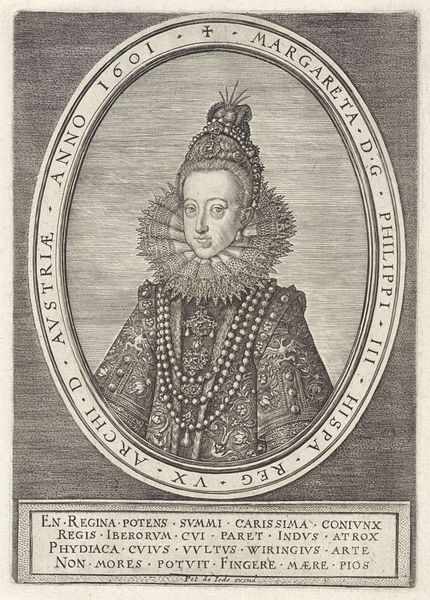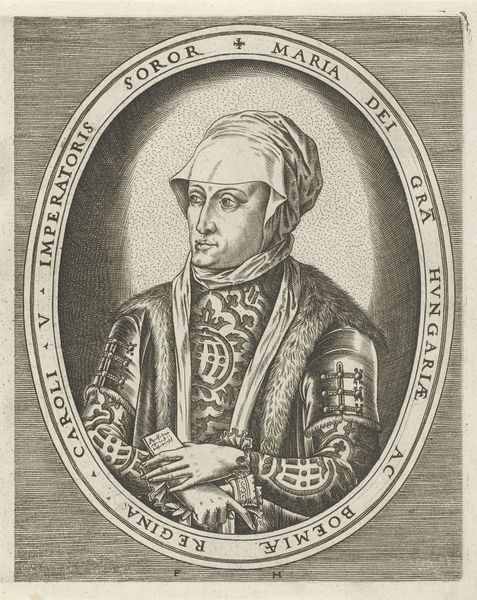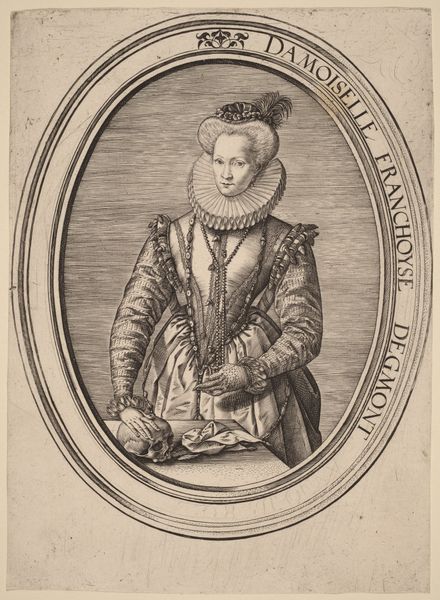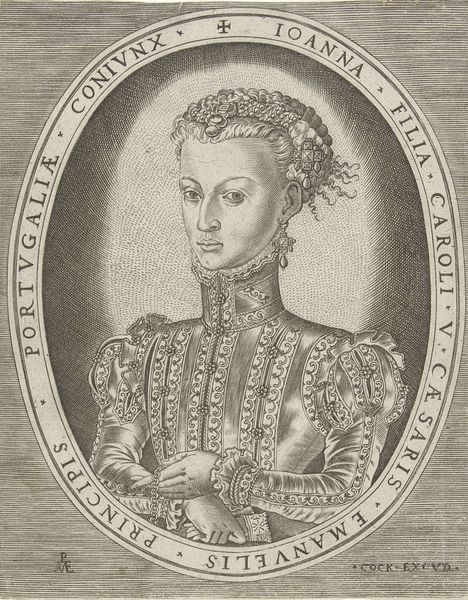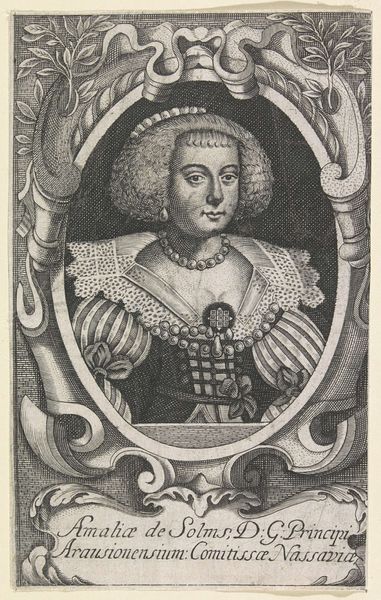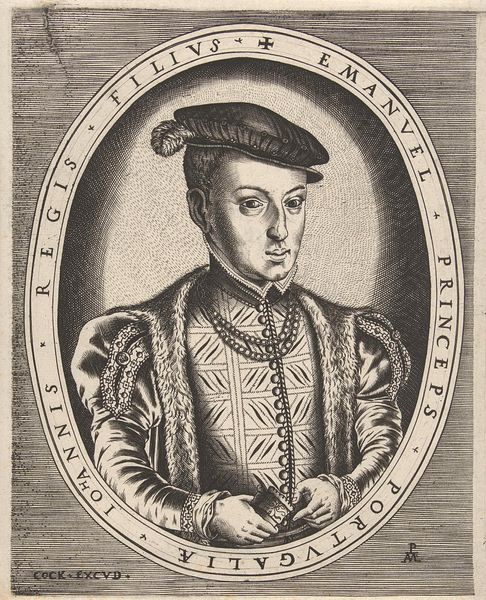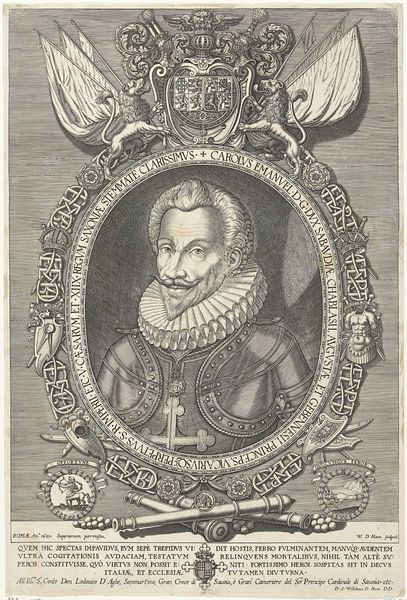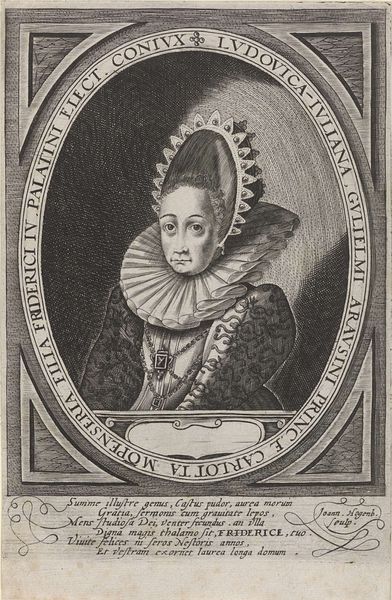
engraving
#
portrait
#
old engraving style
#
geometric
#
portrait drawing
#
history-painting
#
northern-renaissance
#
engraving
Dimensions: height 194 mm, width 154 mm
Copyright: Rijks Museum: Open Domain
Pieter van der Heyden made this portrait of King Francis II of France using engraving, a printmaking technique that involves cutting a design into a metal plate. Engraving is an indirect process, a copy of a copy. Its very nature creates a distance. You might think of it as the analogue version of digital image production – perfectly suited to representing a king, someone who is inherently distant from most of his subjects. Notice how the crisp lines define the King's features and clothing. These lines were painstakingly incised into the metal, allowing for fine detail. The hatching and cross-hatching creates tonality, giving depth and volume to the image. The engraver's skill in manipulating the tools and understanding the material is what makes the portrait so compelling, and so perfectly aligned to the needs of royal propaganda. The proliferation of the printing press during this period meant images could be reproduced and disseminated widely, making engraving a popular medium. It was both a means of artistic expression and a powerful tool for communication, mirroring the rise of centralized power in early modern Europe.
Comments
No comments
Be the first to comment and join the conversation on the ultimate creative platform.
